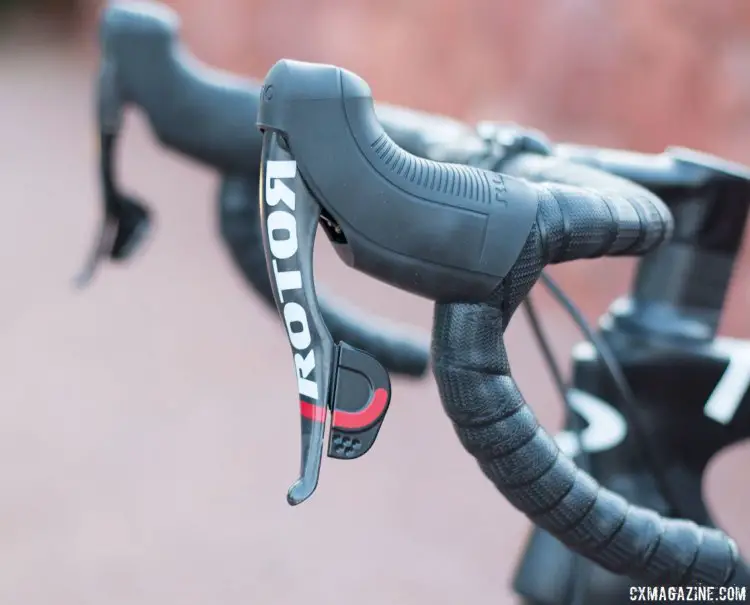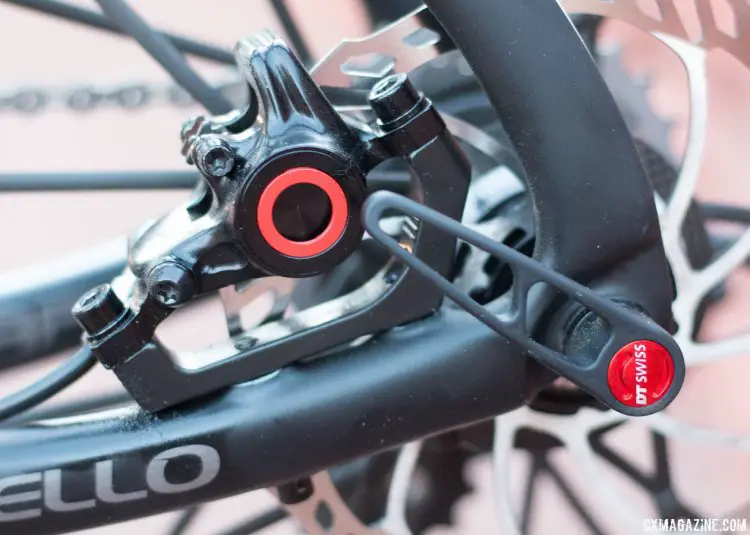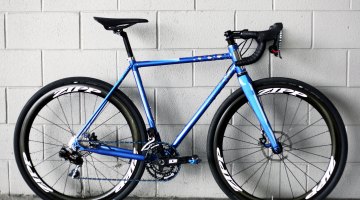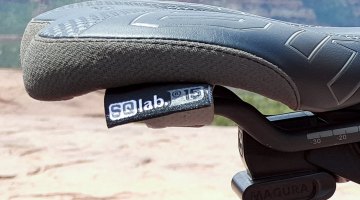Advertisement
Rotor Bike Components has been busy developing a new hydraulic shifting system it is calling Uno, as well as a dual-sided power meter, built around one of the Spanish company's iconic cranks, called the 2INpower. Today we're sharing our (quite lengthy) initial impressions on the innovative Uno drivetrain and brakes, with our typical technical analysis from the perspective of a cyclocross and gravel rider. Stay tuned for more on the 2INpower system.
41 Miles of Shifting
Rotor emphasized our units were pre-production versions, and the company is still refining its components and testing with the professional road team, Dimension Data. But with about a dozen interested journalists over four days on hand at the Magura Ride Camp, the Spanish component company was sufficiently confident in these early versions for us to trust our lives to them on a hilly 41-mile road route in Sedona, Arizona.

Rotor’s Uno hydraulic shifting component group features just one shift lever, similar to SRAM DoubleTap. © Cyclocross Magazine
Out of the gate, with no training or tutorial, the Rotor Uno system was completely intuitive. Whether you’ve had experience with DoubleTap, STI or Egopower levers or not, you’ll quickly be flexing your finger muscles and shifting across the cassette and chainrings. Close your eyes, and on upshifts you could be convinced you’re riding DoubleTap with a stronger spring. There’s a positive feel to each upshift, but the lever throw is more of a consistent effort than just releasing a spring and cable, and having the derailleur’s spring do the rest of the work. For anyone who complains about Di2’s lack of feedback (especially with winter gloves, or numb hands) the Uno’s feel may be a welcome change. For anyone accustomed to the effortless button pushes of electronic shifting, or expecting hydraulic shifting to be effortless, you’ll be surprised by the effort required to execute a shift.
The Uno system differs from cable-actuated mechanical systems in feel in that the lever throw for upshifts or downshifts feels pretty similar in terms of effort. Downshifts don’t feel like they take a lot more effort than upshifts as they do on other cable pull, high-normal systems, but just require more lever throw.
The trims were welcome, and were not so subtle that you’d trigger them by accident with a light tap of full finger gloves. Hear some annoying chain rub? Use that trim to move the front derailleur away from the chain.
Should something go wrong with your fluid, the rear derailleur offers a manual override that lets you physically push the derailleur into the gear of your choice for the ride home. (No, we don’t think USA Cycling or SSCXWC will let you use this feature to create your singlespeed). Unlike Di2 and eTap, there aren’t any from-the-handlebar shifting adjustments you can make.
Undulate, Modulate
It’s far too easy for a cyclocrosser or gravel cyclist to hop on a road bike and be unimpressed with the bike’s braking power, disc brakes or not. We’ve warned ourselves and readers of this tendency in the past, but it’s worth reiterating: with the higher speeds and much higher traction on road bikes and tires, it’s easy to come away unimpressed with road brakes because it takes longer to slow down and is harder to skid. Contrast this to hitting a loose descent on a small knob narrow tire on a cyclocross or gravel bike, and you’ll think you have the world’s best brakes because your tires skid almost immediately on a good setup.
It’s a long-winded way of saying the Magura brakes on the Rotor setup offered great modulation on our hilly road ride, and felt less on/off than the two popular hydraulic disc systems on the market right now. But it may not be a fair comparison until we ride the Rotor Uno/Magura brakes offroad. The brakes were confidence-inspiring on long, curvy downhills when skidding could be disastrous (think Joseba Beloki) and the braking was spectacular considering that we were riding carbon wheels and weren’t subject to the limitations of rim brakes (Uno does offer a hydraulic rim brake option that other journalists were on, which we did not ride).

Rotor’s Uno group features only 160mm rotors and Magura’s MT8 mineral oil-based hydraulic disc brakes. © Cyclocross Magazine
Did I say hydraulic rim brakes? Yes. But serious bike geeks should slow their spinning wheels of excitement with ideas of pairing the Rotor Uno’s hydraulic brake levers with Magura’s hydraulic cantilever brakes, either current models or vintage editions from yesteryear. I asked. Rotor deferred to Magura, and Magura’s Tibor Simai shook his head. The verdict was no. The volume of fluid each system needs is different (the cantilevers require more). Bummer for rim brake lovers.
It’s an impressive debut, but as always, we have nitpicks…




























